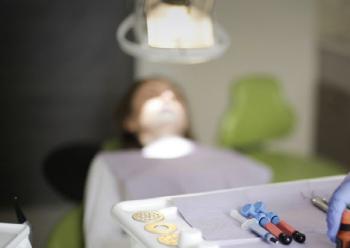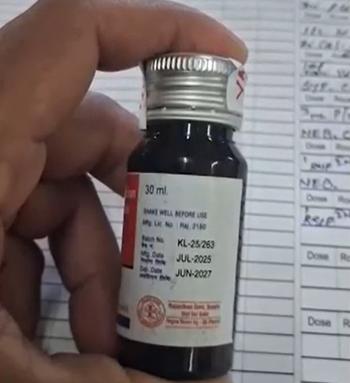Early menopause women are twice as likely to develop abdominal aortic aneurysm, which is the first investigation in Korea
Oct 13, 2025
Every year, October 18 is the 'World Menopause Day' established by the World Health Organization (WHO) and the International Society of menopause (IMS). Menopause is not just a process of ending menstruation, but an important turning point in which female hormones are rapidly reduced and the risk of various chronic diseases such as osteoporosis and dementia is increased, and it is very important in women's lifelong health care.
Meanwhile, a research team led by Professor Kim Mi-hyung (first author) and Professor Hwang Jung-ki (corresponding author) of vascular transplantation at Eunpyeong St. Mary's Hospital (Hospital Director Bae Si-hyun) at Catholic University found for the first time in Korea that early menopause women have a significantly higher risk of abdominal aortic aneurysm.
Abdominal aortic aneurysm is a fatal disease that is difficult to detect early because there are no special symptoms and has a mortality rate of up to 80% in case of rupture. Women have been excluded from the recommendation for examination on the grounds that the incidence rate is low, but the need for early diagnosis has been steadily raised because the risk of rupture is four times higher than that of men and the prognosis of surgery is poor.
The research team published the results of analysis using large-scale national big data in the paper 'Increased Incidence of Abdominal aortic aneurysm in Women with Early Menopauses'. Among 3,109,509 women over 40 years of age who participated in the 2009 national examination, 1,393,271 natural menopause women were followed up for 10 years until 2019, excluding surgery-induced menopause and missing data.
As a result, a total of 3629 people (0.26%) were diagnosed with abdominal aortic aneurysm, and it was confirmed that early menopause women before age 40 had a 23% higher risk of developing abdominal aortic aneurysm than menopause women after age 55. It also further demonstrated that women with a lifetime menstrual period of less than 30 years had a 20% higher risk of developing abdominal aortic aneurysm than women with more than 40 years. In other words, the shorter the female hormone exposure period, the higher the risk of abdominal aortic aneurysm.
In particular, it is noteworthy in this study that the incidence of abdominal aortic aneurysm in women with pre-40 years of age was about twice (0.26% → 0.50%) higher than that of menopausal women after 40 years of age, except for major risk factors of existing screening models, such as age 65 or older and smoking status. This is the result of demonstrating that early menopause is an independent and specific risk factor for increasing the incidence of abdominal aortic aneurysm in women.
Professor Kim Mi-hyung said, "Female hormones play a role in protecting blood vessels, but as these effects disappear due to early menopause, the risk of abdominal aortic aneurysm increases."This study is significant in that it is the first large-scale analysis to find that early menopause is an independent risk factor for causing abdominal aortic aneurysm in women."
Professor Hwang Jeong-ki said, "Early menopause women need to be included in the screening test along with existing high-risk factors (smoking, hypertension, etc.)"It will be an important basis for establishing standards for screening women's customized abdominal aortic aneurysm in the future and establishing early diagnosis and treatment strategies."
Meanwhile, the results of this study are published in the Journal of Vascular Surgery (IF 4.3), a prestigious international academic journal published by the American Society of Vascular Surgery, attracting great attention from domestic and foreign academia.
Meanwhile, a research team led by Professor Kim Mi-hyung (first author) and Professor Hwang Jung-ki (corresponding author) of vascular transplantation at Eunpyeong St. Mary's Hospital (Hospital Director Bae Si-hyun) at Catholic University found for the first time in Korea that early menopause women have a significantly higher risk of abdominal aortic aneurysm.
Abdominal aortic aneurysm is a fatal disease that is difficult to detect early because there are no special symptoms and has a mortality rate of up to 80% in case of rupture. Women have been excluded from the recommendation for examination on the grounds that the incidence rate is low, but the need for early diagnosis has been steadily raised because the risk of rupture is four times higher than that of men and the prognosis of surgery is poor.
The research team published the results of analysis using large-scale national big data in the paper 'Increased Incidence of Abdominal aortic aneurysm in Women with Early Menopauses'. Among 3,109,509 women over 40 years of age who participated in the 2009 national examination, 1,393,271 natural menopause women were followed up for 10 years until 2019, excluding surgery-induced menopause and missing data.
As a result, a total of 3629 people (0.26%) were diagnosed with abdominal aortic aneurysm, and it was confirmed that early menopause women before age 40 had a 23% higher risk of developing abdominal aortic aneurysm than menopause women after age 55. It also further demonstrated that women with a lifetime menstrual period of less than 30 years had a 20% higher risk of developing abdominal aortic aneurysm than women with more than 40 years. In other words, the shorter the female hormone exposure period, the higher the risk of abdominal aortic aneurysm.
In particular, it is noteworthy in this study that the incidence of abdominal aortic aneurysm in women with pre-40 years of age was about twice (0.26% → 0.50%) higher than that of menopausal women after 40 years of age, except for major risk factors of existing screening models, such as age 65 or older and smoking status. This is the result of demonstrating that early menopause is an independent and specific risk factor for increasing the incidence of abdominal aortic aneurysm in women.
Professor Kim Mi-hyung said, "Female hormones play a role in protecting blood vessels, but as these effects disappear due to early menopause, the risk of abdominal aortic aneurysm increases."This study is significant in that it is the first large-scale analysis to find that early menopause is an independent risk factor for causing abdominal aortic aneurysm in women."
Professor Hwang Jeong-ki said, "Early menopause women need to be included in the screening test along with existing high-risk factors (smoking, hypertension, etc.)"It will be an important basis for establishing standards for screening women's customized abdominal aortic aneurysm in the future and establishing early diagnosis and treatment strategies."
Meanwhile, the results of this study are published in the Journal of Vascular Surgery (IF 4.3), a prestigious international academic journal published by the American Society of Vascular Surgery, attracting great attention from domestic and foreign academia.
|
This article was translated by Naver AI translator.














